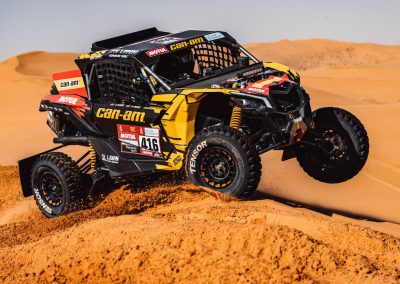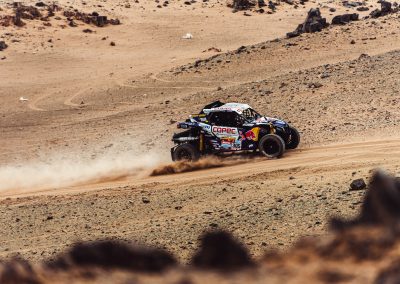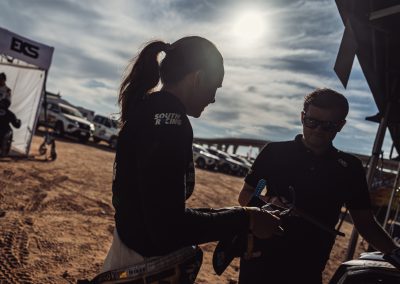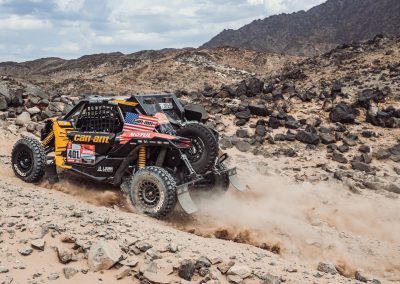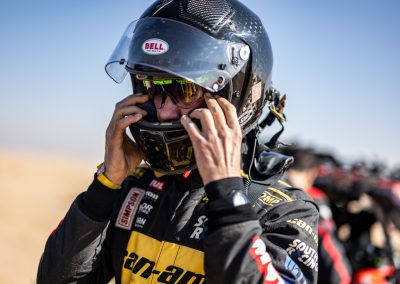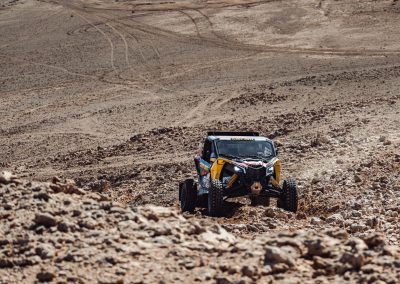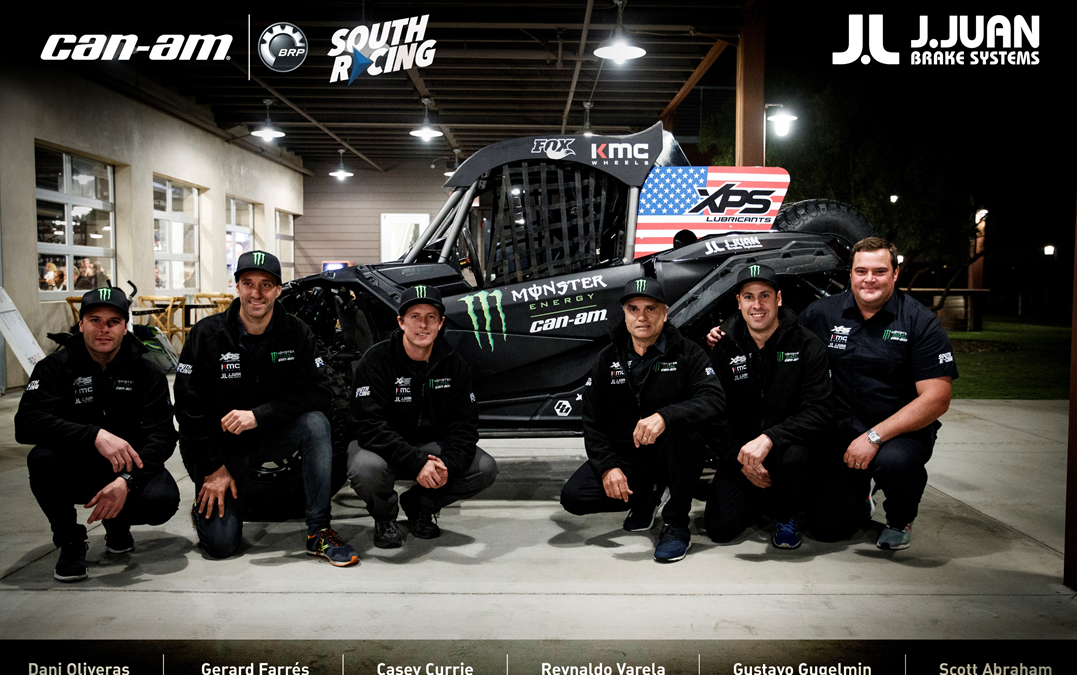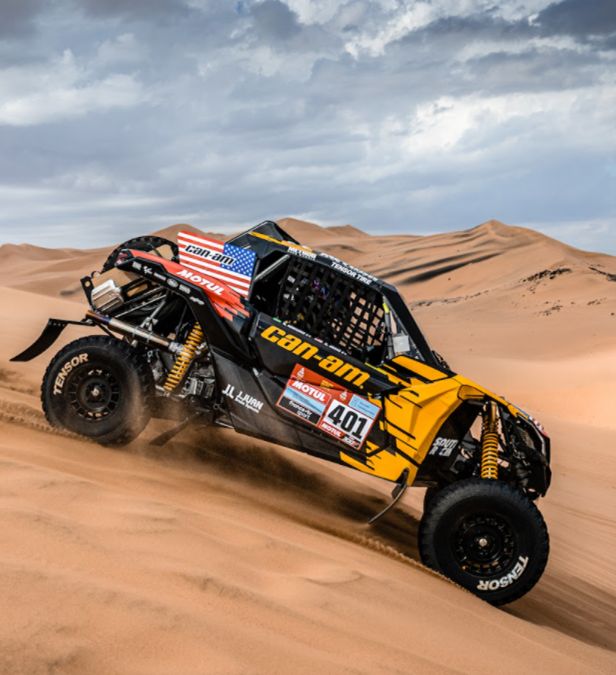
The brakes that dominates Side By Side competitions
Once again, J.Juan’s brakes win the Dakar
For the fourth consecutive year, J.Juan brakes have won the Dakar in the Side by Side category. Again, in the categories T4 (vehicles closer to the series) and T3 (prototypes with increased performance).
But what about those brakes that have made Casey Currie (2020) and Austin Jones (2022) triumph in the Dakar and that they win in all Side by Side competitions?

The SSV are synonymous of performance. Nowadays, we have designs with almost 170 HP for a weight of over 700kg with a great dynamics and stability. Real racing machines which currently race in the well-known Baja California and Dakar, a high demanding durability tests than allow us to check the limitations of these powerful vehicles.
The brake system is one of the components which suffers the most in this racing events. The average speed of the SSV is continuously increasing, and the need of dissipating such a big kinetic energy puts the drivers into risky situations such as the loss of brake pressure due to vapor lock, the brake pad destruction due to the heat and even to deform the brake calipers due to the high temperature of the aluminum body.
The constant evolution of the SSV brings us a catalogue of models that, again, require a step forward regarding the brake system. Notice that we are taking about vehicles which are sold as ready to race, with 1000cm3 turbo engines and a high-end suspension with fines settings. In order to make sure that the brake system can hold all this power JJuan, with all the know-how from its racing department, has developed a real racing brake kits, designed in order to fit as “plug & play” on the main SSV used in the main championships. As told, the installation is “plug & play”, that means, with no modification on the vehicle!

The content of this kit is quite impressive, let’s see some details about its main features.
- Brake calipers. On the front, two fixed 4 piston calipers with piston size 36/32mm and two rear 4 piston caliper size 32/27mm, both CNC machined from a solid 7075 aluminum block with a T6 heat treatment and hardened by anodic oxidation. The pistons have non-equal size, to make sure that the pad has a homogeneous wear, and they are machined with gr. V titanium alloy, offering a low weight together with a good thermal isolation in order to protect the brake fluid from the high temperatures generated after the braking operation. Besides, the high friction sintered SBS pads are manufactured with induction heating and use the NRS fixation, which allow a great resistance to shear and overheating.
A fix caliper has a greater stiffness compared to a floating one, specially at high temperatures. At high temperature conditions is where the stock brake system goes down, among other reasons, because the big deformation the stock caliper has. Another key point from this kit is that the JJuan CNC calipers are installed on the original knuckle, with no modification needed.
- Brake discs. Manufactured by Galfer and with a maximized diameter compared to the stock ones with, looking for an increased effective brake torque. The design of the JJuan race caliper, because of its well simulated geometry, allows the brake disc to increase without modifications on the rim or the knuckle. This is another advantage compared to the stock floating calipers, which can only achieve stiffness by adding material on the bridge area, what leads to interferences with the rim if the brake disc is too big.
- Accessories. This kit includes as well light racing hydraulic bolts and the anchoring bolts for the calipers, altogether with a nice-looking box presentation, custom made for each vehicle.


The improvements over the stock brake system are clearly noticeable, all the test drivers
that have joined JJuan for the development of this kit have given such a great feedback, and do really appreciate forgetting about the brake going down. Also, the increased brake power shortens the braking distances and helps in avoiding the foot to get exhausted. All these achievements are not just luck, as JJuan has wisely applied all its know-how and with that, achieved to manufacture such an effective product as this racing brake kit is.
DESIGN. From the very beginning, the development of this kit has aimed for the top racing championships, by hearing to the feedback and complains from the top drivers from different championships, including the Paris Dakar. All of them have indicated that in an aggressive driving style (rally style), because of the high temperatures reached, the brake system fails, as the brake fluid starts to boil and the brake pad and disc get collapsed. At that point, additionally, the drivers can feel a loss of feeling on the pedal, which feels then so soft. All this loses in brake performance make the drivers lose its confidence, and with that, they feel forced to slow down! That is not acceptable in a race.
With these complains on the table, the development team was clear about what path to choose to solve them all:
- A caliper design intended to be cooled down with convection cooling was required, having as well, a great stiffness at hot condition, chance to add thermal isolations for the brake fluid and with an increased brake pad surface compared to the stock caliper.
- Additionally, a main objective was to increase the brake torque from the stock brake system to achieve more brake power. This has been achieved by larger pistons size and by increasing the distance of the pressure point (bigger disc diameter)
- Altogether making sure that the installation on each vehicle was carried out without any modification on any stock component.
On the other hand, the FEA simulation makes possible to anticipate the stiffness of the caliper, leaving the weight to the minimum as it’s possible to precisely identify the concrete stressed areas.


CONCLUSIONS AND COMPARISON
The data logged during the tests is hard to believe, but the feedback from the drivers do match the conclusions from the data, and sure is not only a coincidence.
- Improved brake efficiency by a 70% (less force on the pedal). The fatigue on the foot is one of the concerns of the drivers. The J.Juan race calipers make possible to maintain a 0,85G deceleration on an offroad ground with much less force on the pedal. This is due to the increased piston area and the bigger diameter disc (included in the kit), as the J.Juan caliper design allows a bigger disc without interferences with the rim.
- Reduction of the brake fluid working temperature to a half, in both front and rear calipers. The stock brake system comes close to 150-160ºC, in a point where the brake fluid will start to boil. This leads to a softer feeling on the pedal, with an increase of the pedal dead stroke, what gives less confidence to the driver by losing his pressure point. The J.Juan calipers show a great improvement as the titanium pistons isolate the brake fluid from the high temperature of the pads and, in addition, the cooling by convection is maximized because the fact these are fix calipers, not floating, where the air goes through them easily.
- Reduction of the pad temperature by a 30ª on the front and 80% at the rear. This point is very important, because the pads, despite they are from sintered compound, on extreme conditions will get glazed and the friction material will get detached from the backplate because the super-hot temperatures and the high pressure they need to stand. The J.Juan calipers have more friction material surface than the stock calipers and also are constantly cooled down by the air flow going through. This is a key point, because the stock brake system goes down step by step, as the pad is overheated it loses its performance and bite, at that point, the driver needs to generate more pressure on the system to keep a good deceleration. The only way the driver can create more pressure is by pushing the pedal harder and, at the end, this leads to his fatigue. In a long and hot racing day this can be really annoying.






